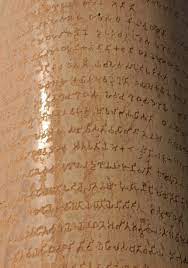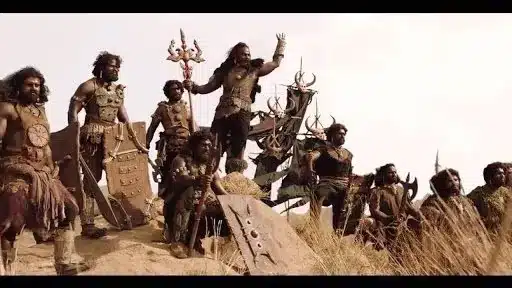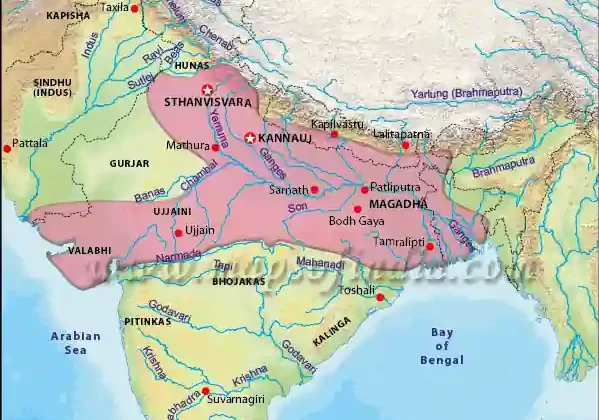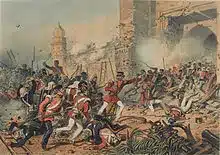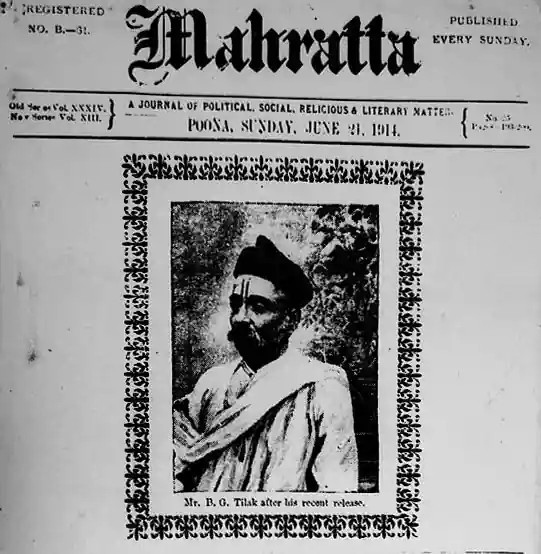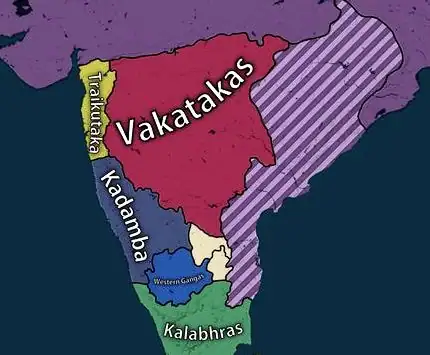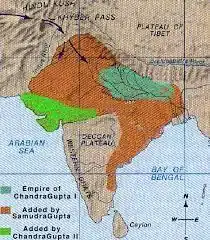Introduction of the Kalinga War
The Modern-day Odisha was the Ancient Kalinga. The exact reason for invading Kalinga is not known. Ashoka invaded Kalinga in 261 B.C., in the 12th year of his reign and the 8th year of his coronation.
From the viewpoint of Mauryan imperialism, the conquest of Kalinga was considered necessary for various reasons. Maurya Empire was probably on friendly terms with the southern kings such as Cholas and Pandyas. Kalinga was strategically located because it was located in the heart of his territory. It controlled routes to South India. Once Kalinga was won, there was not much need to win over further territories.
From the side of Kalinga, her freedom-loving people were powerful enough to resist the invasion with all their might. As a result, the Kalinga War became one of the most violent and terrible wars of ancient times.
Important Causes of the Kalinga War
In 261 B.C., the following factors contributed to the outbreak of the Kalinga war.
Ashoka’s imperialistic design (Kalinga War)
The conquest of Kalinga was necessary to complete the political unification of India. Since Kalinga territory was like the land bridge between the north and the south, its conquest could result in the safe passage for the Magadhan army for aggression in the far south. The existence of a powerful independent state touching upon the Magadhan territory was a direct threat to Mauryan imperialism.
- By the time Asoka came to power, the Magadhan Empire had conquered the majority of India.
- Ashoka ruled the entire territory, from the Himalayas in the north to Mysore in the south, and from the Kabul valley in the northwest to Bengal in the east.
- A separate kingdom of Kalinga, not far from the Magadhan empire’s centre of gravity, was intolerable for a warlike king like Ashoka.
Kalinga’s economic prosperity (Kalinga War)
- Certain economic factors had contributed to the rivalry between Kalinga and Magadha. Kalinga monopolized the Indian ocean’s oversea trade and amassed vast wealth. Additionally, her wealth increased as a result of inland trade.
- While the Mauryas maintained foreign relations with the Hellenistic powers of the time, they did not maintain commercial relations with them.
- Additionally, the Mauryas had not developed a naval power by that time, and the Navadhyaksha (Superintendent of Shipbuilding) mentioned by Kautilya in his Arthasastra was in charge of policing rivers, lakes, and seashores, rather than building ships for maritime trade.
- Thus, Kalinga’s economic prosperity became an eyesore for Magadha.
Commercial component (Kalinga War)
- While Magadha possessed extensive foreign relations and internal resources, it faced a commercial crisis due to a lack of trade routes.
- The Kalinga people dominated the Indian Ocean and controlled the overseas trade.
- Their supremacy on the eastern seacoast virtually closed the sea routes in the east for the Magadhan merchants.
- Similarly, the land routes for internal trade from the Gangetic valley toward the Deccan were also controlled by Kalinga.
- The economy of the Maurya Empire was thus adversely affected by Kalinga’s supremacy over the seas and the eastern seacoast.
Stealing of Asoka’s jewels by the Nagas (Kalinga War)
- Some accounts of the Tibetan author Taranatha had led some historians to believe that the seafaring people of Kalinga plundered some ships coming from outside with costly jewels for Asoka.
- As a result, the emperor became enraged and invaded their territory.
- It is probable that the Kalingans did not permit the maritime journey of the Magadhans in the Indian Ocean.
- The rivalry between the two powers was politically and economically natural because of their existence nearer to each other.
Karuvaki’s Legend (Kalinga War)
- The fisherman community on Odisha’s eastern coast has a strange story about the cause of the Kalinga war.
- According to legend, Asoka invaded Kalinga after falling in love with Karuvaki, the daughter of a fisherman and fiancee of Kalinga’s crown prince.
- Though this appears absurd, it cannot be rejected outright because Asoka had a queen named Karuvaki who was the mother of Tivara, Ashoka’s son.
Religious component (Kalinga War)
- Religion could have played a role in the Kalinga war.
- Asoka was a devout Saiva prior to the Kalinga War.
- Though determining the predominant religion in Kalinga is difficult, with a reasonable degree of certainty, it can be stated that Buddhism, not Brahminism (Saivism), was the dominant religion in Kalinga.
- Ashoka may have chosen to wage a holy war against Kalinga in order to educate the Buddhists.
- Though historians have no concrete information about the nature of the polity in Kalinga during Asoka’s invasion or the state of religion in this land, it appears that Brahmanism did not prevail as a state religion here. However, this is a contentious subject.
Divergent views of Historians (Kalinga War)
It is known that Kalinga was a part of the Magadhan Empire during the time of the Nandas. Then what led Ashoka to re-conquer it. Historians have divergent views while answering this question ‘What prompted Ashoka to invade Kalinga’.
- According to Dr. H. C. Raychowdhury, Ashoka attacked Kalinga because Kalinga had asserted its independence taking the opportunity of general revolt during the time of Bindusara’s rule.
- According to some historians, Kalinga had increased its military power from the time of Chandragupta to that of Ashoka and Ashoka could not ignore the complexity of the situation. Kalinga had a vast army and could be detrimental to the security of the Maurya Empire. It was also true that due to her commercial relation with Malay, Java and Ceylon Kalinga had enormous material prosperity. Possibly this had also provoked Ashoka to invade Kalinga.
- According to Dr. R.S.Tripathy during that period of confusion that followed the overthrow of the Nandas, Kalinga declared independence. Chandragupta had no time to reconquer it and Bindusara had no intention for this. Moreover, since its independence, Kalinga became an arch enemy of Magadha and allied itself with Chola and Pandya countries of the South against Magadha. Thus, Ashoka invaded Kalinga.
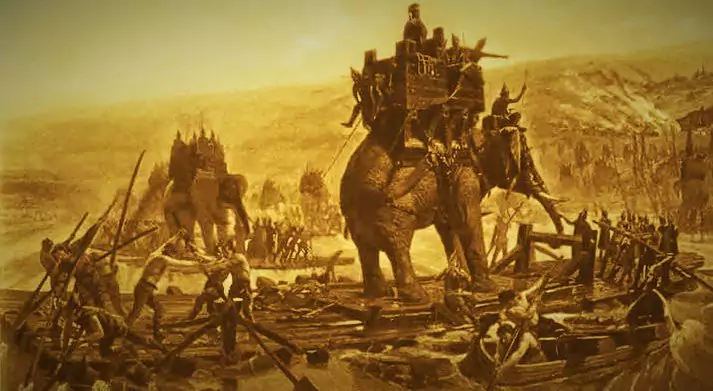
Kalinga as a Powerful state
From ancient times Kalinga maintained her identity as a powerful state. It extended from the river Ganges in the east to the river Godavari in the south, covering the eastern seacoast of India. Its northern frontier touched the southern frontier of the Maurya Empire. Modern Orissa covers the core areas of ancient Kalinga.
- With many seaports on her coast, Kalinga was a maritime power with oversee colonies. Her merchants and sailors crossed the Indian Ocean to carry on prosperous trade with south-east Asian countries. Ancient traditions of Burma refer to the Kalinga colonies in that country.
- The Military power of Kalinga was also formidable. Ancient sources refer to her elephant forces as a cause of that strength.
- The Greek ambassador Megasthenes who lived in the court of Chandragupta Maurya referred indirectly to the military power of Kalinga. According to him, the king of Kalinga in the days of the first Maurya Emperor maintained for himself a standing bodyguard of “60,000 foot soldiers, 1,000 horsemen, and 700 elephants”. If the king required such a big force to protect himself and his palace, he must have maintained a very big and powerful army to protect his Kingdom.
Mauryan army
- During the time of Chandragupta, the Mauryan army contained 6 lakh of infantry, 30 thousand cavalries, 9 thousand elephants and 8 thousand war chariots.
- By the time of Ashoka, the size of the army could have been much larger, with fighting forces from all parts of the empire.
- Some historians suggest that his army also contained mercenaries from Syria and Bactria.
Kalinga War: People’s War
From the side of Kalinga, it was truly a people’s war. Surprisingly enough, Ashoka does not mention in his inscriptions the name of the King of Kalinga against whom he fought that deadly war. It was customary in those times for a victorious king to record the name or names of the kings whom he defeated. Ashoka did not follow this usual rule. In his inscriptions of later dates, he had mentioned the names of his contemporary kings who ruled outside India and to whose courts he sent his ambassadors of peace.
Ashoka thus knew how to record the names of contemporary monarchs. But, it is difficult to explain why he did not record the name of the Kalinga king after his great victory over him. Instead, he always mentioned the term ‘Kalinga’, meaning the land or the people, in his description of the Kalinga War.
Major Rock Edict XIII inscription on Kalinga War
Contemporary literary and epigraphic sources are silent about the actual campaigns of Ashoka and the nature of the battles that the people fought. Ashoka’s own inscriptions mention only about the aftermath of the war. He does not refer to the number of dead or wounded on his side.
But, referring to the casualties on the Kalinga side, his inscriptions describe as follows:
“In the eighth year of his consecration the Beloved of the Gods, the King Priyadarsi, conquered Kalinga. A hundred and fifty thousand men were thence carried away captive, a hundred thousand were there slain, and many times that number died”.
The aftermath of the Kalinga War
The invasion of Kalinga was a big milestone in the history of Magadha, and of India. It is the only war that led a conqueror to give up his sword. It had an incredible influence on the personal life and policy of Ashoka. The despair and casualty that he had inflicted upon the people of Kalinga filled his heart with deep sorrow and regret.
The cry of the wives and women of the dead, the tears of the children, and the terrifying sufferings of the dying men, all changed his heart and mind. He found his consolation in Buddhism. He was repenting for his deeds. He embraced Buddhism and took the vow of inculcating ‘Dhamma’ to all men throughout his life.
- There were significant changes in state policy. It ended the policy of Magadhan imperialism. Ashoka ended the age-old policy of aggression and conquest of the Magadhan Kings. A new policy of Peace and non-violence began to be adopted in the realm of inter-state relations.
- The call of Dharma – where all are equal and where all feels for all began to flourish. The blood-thirsty tyrant became a lover of mankind who preached non-violence.
- While in the short-run Ashoka’s policy of peace brought harmony to the empire, in the long run it crippled its ability to defend itself from external threats. The long neglect of the army under Ashoka would be one of the factors that led to the eventual fall of the Mauryan Empire following his death in 232 BC.
Also, read this:
| Mauryan Empire | Sites Of Indus Valley Civilization |
| Vedic Period | Vedic Literature |
| Marriages In the Later Vedic Period | MCQs: History Of Ancient India |

